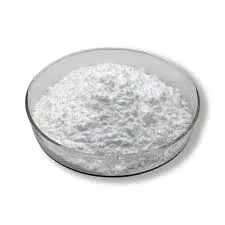
अक्ट . 11, 2024 04:41 Back to list
methylhydroxyethyl cellulose
Understanding Methyl Hydroxyethyl Cellulose Properties, Applications, and Benefits
Methyl Hydroxyethyl Cellulose (MHEC) is a non-ionic cellulose ether that plays a crucial role in various industries, including construction, pharmaceuticals, cosmetics, and food. It is derived from cellulose, which is a natural polymer found in the cell walls of plants. By modifying cellulose with methyl and hydroxyethyl groups, MHEC presents unique properties that enhance its functionality and versatility.
Chemical Structure and Properties
MHEC is characterized by its unique chemical structure, which consists of methyl and hydroxyethyl substituents attached to the cellulose backbone. This modification increases the solubility and water-retention capacity of the compound, making it an excellent thickening agent. MHEC is soluble in water and forms a viscous gel upon dissolution, which is advantageous in various applications where viscosity control is essential.
One of the standout properties of MHEC is its ability to provide excellent film-forming and adhesive qualities. This makes it suitable for use in products that require strong binding and cohesive properties, such as tile adhesives and paints. Additionally, MHEC is resistant to heat and acid, contributing to its stability under various conditions.
Applications in Different Industries
1. Construction Industry In construction, MHEC is primarily used as an additive in cement-based formulations like tile adhesives, mortar, and plasters. Its ability to enhance workability, improve adhesion, and increase water retention makes it invaluable in construction applications. MHEC ensures that the mixtures remain workable longer, allowing for better application and finish.
2. Pharmaceuticals MHEC finds application in the pharmaceutical industry as an excipient. It is employed in tablet formulations as a binder and disintegrant, facilitating the uniform distribution of active ingredients. Additionally, the gel-forming properties of MHEC are utilized in controlled-release formulations, allowing for the gradual release of medication into the system.
3. Cosmetics and Personal Care In the cosmetics industry, MHEC serves as a thickener and stabilizer in various formulations, including creams, lotions, and gels. It contributes to the product's texture and feel, enhancing user experience. Its ability to retain moisture also benefits skin care products, promoting hydration.
methylhydroxyethyl cellulose

4. Food Industry MHEC is recognized as a food additive, often labeled as E461. It is utilized as a thickener, stabilizer, and emulsifier in various food products, including sauces, dressings, and dairy items. By improving texture and consistency, MHEC enhances the overall quality of food products.
Benefits of Methyl Hydroxyethyl Cellulose
The benefits of MHEC are extensive, making it a popular choice across different applications. Some of the key advantages include
- Versatility MHEC's ability to adapt to various formulations makes it a versatile ingredient in multiple industries. Its performance can be tailored based on the required viscosity, gel strength, and solubility.
- Non-toxic and Biodegradable As a natural derivative, MHEC is non-toxic and environmentally friendly. Its biodegradability adds to its appeal, particularly in an era where sustainability is becoming increasingly important.
- Improved Product Performance Whether it's enhancing the stability of a cosmetic product or improving the workability of a construction material, MHEC significantly enhances product performance, making it a valuable additive.
Conclusion
Methyl Hydroxyethyl Cellulose (MHEC) is a multifaceted cellulose ether that offers numerous benefits and applications across diverse industries. Its unique properties, such as excellent thickening, film-forming, and adhesive capabilities, make it an essential ingredient in construction, pharmaceuticals, cosmetics, and food. As industries continue to seek innovative solutions, MHEC's role is likely to expand, ensuring it remains a vital component in the formulation of high-quality products.
-
Versatile Hpmc Uses in Different Industries
NewsJun.19,2025
-
Redispersible Powder's Role in Enhancing Durability of Construction Products
NewsJun.19,2025
-
Hydroxyethyl Cellulose Applications Driving Green Industrial Processes
NewsJun.19,2025
-
Exploring Different Redispersible Polymer Powder
NewsJun.19,2025
-
Choosing the Right Mortar Bonding Agent
NewsJun.19,2025
-
Applications and Significance of China Hpmc in Modern Industries
NewsJun.19,2025







